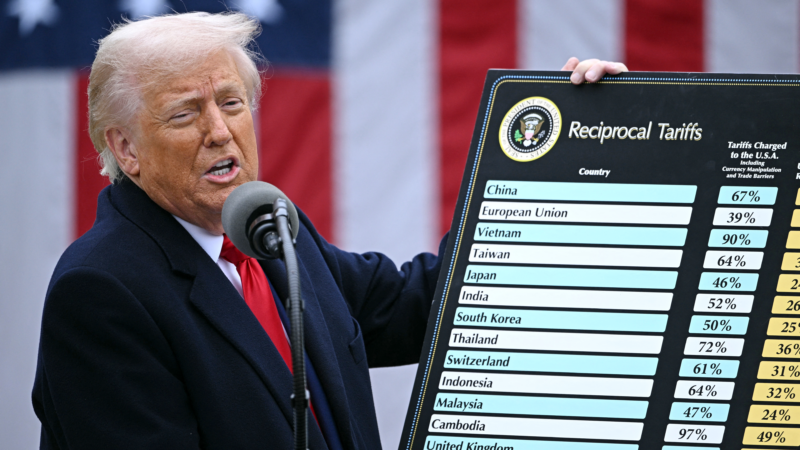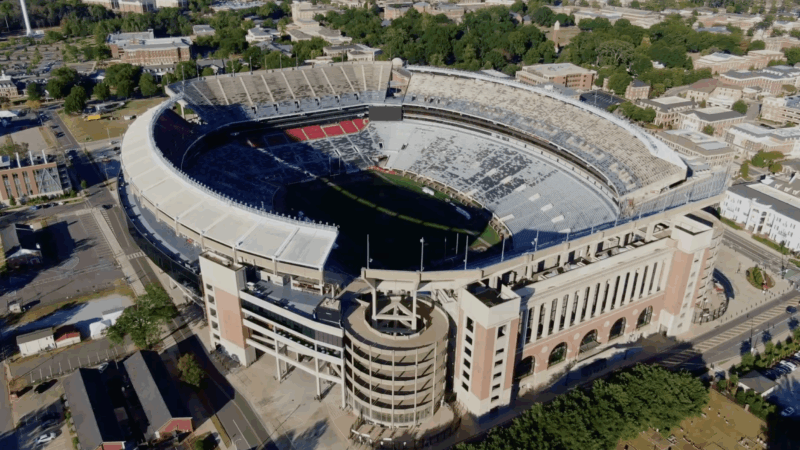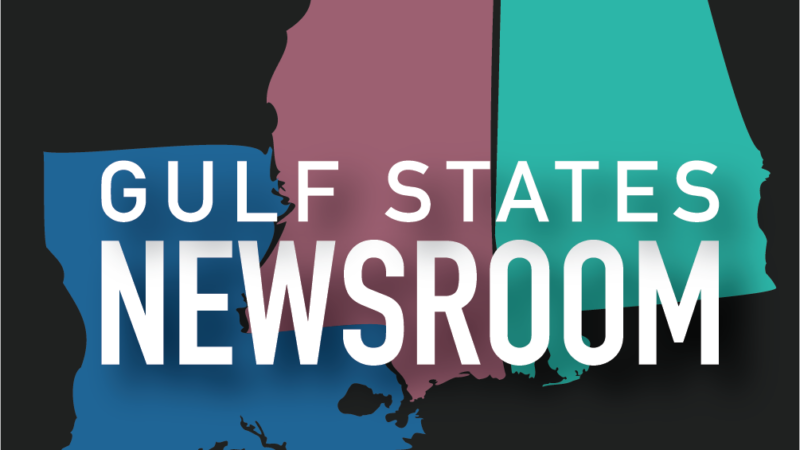How much will tariffs raise prices? Trump’s economists just revealed their answer
When President Trump announced his latest tariffs on Wednesday, he also ignited an economic mystery. Just where in the world did those numbers come from?
Holding up a sign on the White House lawn, Trump pointed to a new, 34% tax on imports from China; for the EU, a tax of 20%. Vietnam got 46%; India, 26%. Nigeria? Just 15 percent. Trump claimed that these “reciprocal” tariffs reflect how other countries already tax American products. “That means they do it to us and we do it to them,” he said. “Very simple.”
That is not true. These are not reciprocal tariffs. They do not correspond to the tariff rates in other countries. The truth behind where these tariffs came from is far more interesting.
On Wednesday night, the administration revealed how they calculated the new tariffs, which are the highest taxes on foreign products that America has seen in generations. (For a sense of that era, listen to the Planet Money episode on the Smoot-Hawley tariffs.)
Buried in that math, finally, is a straightforward answer to a question that Trump has long refused to straightforwardly answer: How much will his tariffs raise prices?
Diving deep into Trump’s tariff math
This is the Trump administration’s tariff formula, as revealed on Wednesday night by the Office of the U.S. Trade Representative :

Behind these Greek letters there’s a blunt but understandable approach. Essentially, the equation is trying to answer the question: How high should we set tariffs in order to get Americans to buy fewer foreign products, and close the trade deficit? This math says, the more of a trade deficit the U.S. has with another country, the higher that tariffs should be on that country’s products.
Take China for instance. Last year, Americans imported about $439 billion of products from China — chiefly electronics, clothing, and machinery — while exporting only $144 billion. According to this formula, a 67% tax on those Chinese products should correct this trade imbalance. (On Wednesday Trump announced that the actual tariff would only be half of that, or 34%.)
Here’s how Trump’s math says it would work: The 67% tax should raise the prices of Chinese products in the United States. And those higher prices should discourage Americans from buying Chinese products or products that contain Chinese components.
This is contrary to Trump’s previous public statements, where he has variously denied that tariffs would raise prices or has said that he “couldn’t care less.”
But according to Trump’s math, the tariffs are supposed to raise prices. Because those higher prices are the driving force that will close the trade deficit.
Want the latest updates on all things related to money and the economy? Sign up for the Planet Money newsletter.
There are a couple of major assumptions in Trump’s math. The biggest assumption involves how much the tariffs would cause prices to go up. Here, the administration makes an eyebrow-raising admission: It guesses that for every 10% hike in tariffs, there will be a 2.5% increase in prices.
Translation: Trump’s economists think that about a quarter of his tariffs will be passed onto American consumers in the form of higher prices.
Going back to the China example, here’s how it would all play out. According to Trump’s math, the 67% tariff on Chinese products would cause prices of those products to go up by 16.75%.
By coincidence, the administration also assumes that for every 10% increase in the price of foreign products, there will be a 40% decrease in how much Americans buy. (This is on the higher but still reasonable end of what mainstream economists believe.) So, faced with 16.75% higher prices, Trump expects Americans to decrease their purchases by four times that amount. Which brings us back to 67%.
In other words, a 67% tariff on Chinese products would reduce demand for Chinese products by … also 67%. So if Americans are currently buying $439 billion worth of Chinese products each year, Trump’s economists expect that the new tariffs will reduce that spending by $294 billion — which would close the trade deficit. At least in theory.
What’s wrong with Trump’s tariff math?
Certainly these new tariffs are not “reciprocal” tariffs. But the math behind them is not wholly invented or nonsensical, despite what some online have claimed.
In fact, for possibly the first time ever, the administration is explicitly acknowledging some of the basic economic logic of tariffs. Tariffs do raise prices. And higher prices do cause people to buy less stuff. And if Americans buy less foreign stuff, then America’s trade deficit with other countries will narrow.
But that’s not to say that any of Trump’s tariff calculations arrive at the right answer. For one, these are very rough, back-of-the-envelope calculations. As laid out, this formula treats every trading partner, every good and every industry the same. Bananas, oil, clothing, computers or cars — it doesn’t matter what a country sends to the U.S.
More importantly, the formula hinges on a big assumption about how much tariffs will raise prices. Trump’s math assumes that only a quarter of the tariffs would be passed onto American consumers in the form of higher prices. But economists who have studied Trump’s tariffs in 2018 — on steel and aluminum and various products from China — calculate that almost all of those tariffs ended up being passed onto Americans.
Aside from that, Trump’s tariff math also ignores the broader economic consequences of these sweeping new tariffs. They will have an effect on the overall American economy. They will influence exchange rates. And they will likely provoke retaliatory tariffs from other countries.
So, will Trump’s new tariffs actually close the trade deficit? Maybe, maybe not. But finally, at least, the administration has shown its work. And according to their calculations, raising prices and closing the trade deficit is what these tariffs are designed to do.
Former U.S. Sen. Doug Jones announces run for Alabama governor
Jones announced his campaign Monday afternoon, hours after filing campaign paperwork with the Secretary of State's Office. His gubernatorial bid could set up a rematch with U.S. Sen. Tommy Tuberville, the Republican who defeated Jones in 2020 and is now running for governor.
Scorching Saturdays: The rising heat threat inside football stadiums
Excessive heat and more frequent medical incidents in Southern college football stadiums could be a warning sign for universities across the country.
The Gulf States Newsroom is hiring an Audio Editor
The Gulf States Newsroom is hiring an Audio Editor to join our award-winning team covering important regional stories across Mississippi, Alabama and Louisiana.
Judge orders new Alabama Senate map after ruling found racial gerrymandering
U.S. District Judge Anna Manasco, appointed by President Donald Trump during his first term, issued the ruling Monday putting a new court-selected map in place for the 2026 and 2030 elections.
Construction on Meta’s largest data center brings 600% crash spike, chaos to rural Louisiana
An investigation from the Gulf States Newsroom found that trucks contracted to work at the Meta facility are causing delays and dangerous roads in Holly Ridge.
Bessemer City Council approves rezoning for a massive data center, dividing a community
After the Bessemer City Council voted 5-2 to rezone nearly 700 acres of agricultural land for the “hyperscale” server farm, a dissenting council member said city officials who signed non-disclosure agreements weren’t being transparent with citizens.









